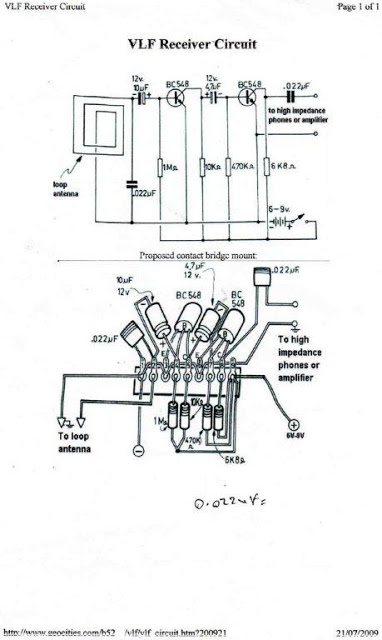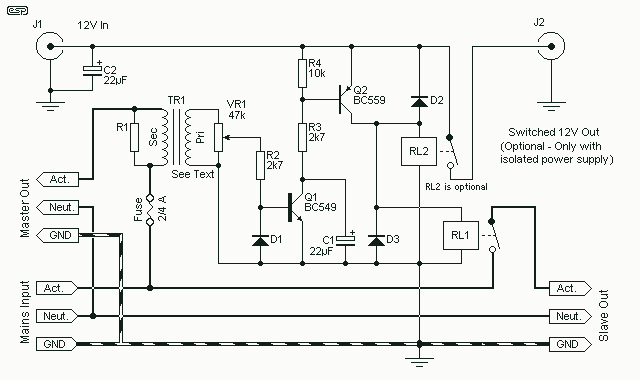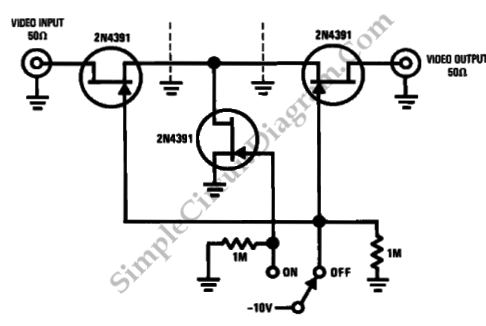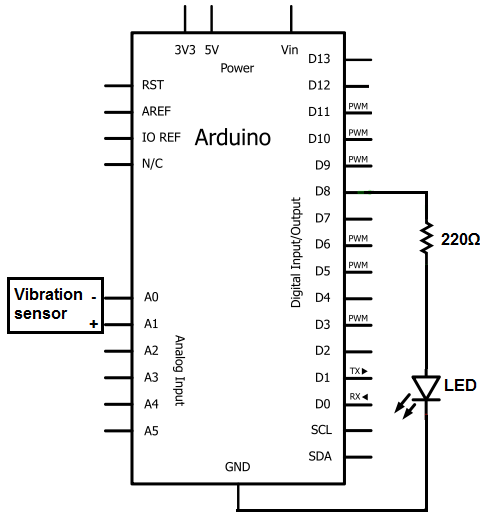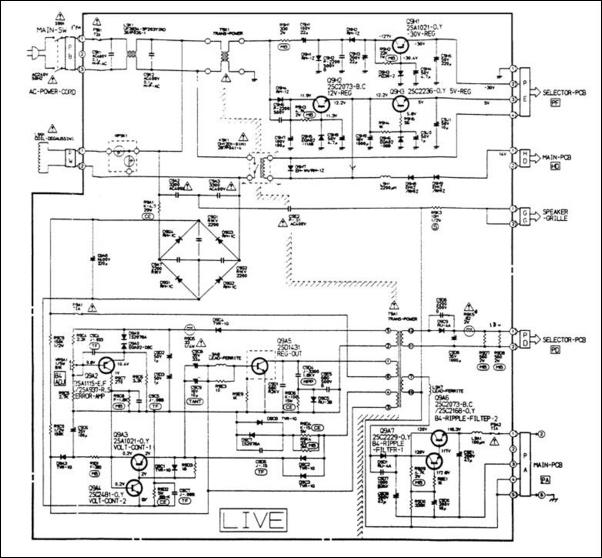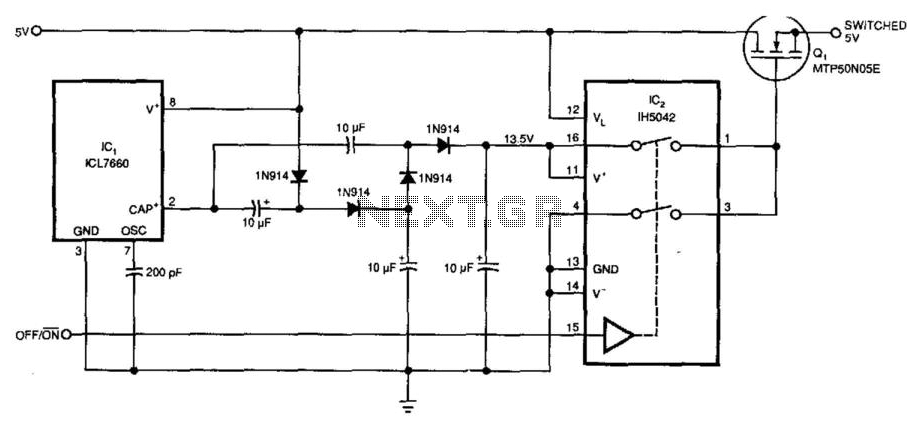
555 Overheat Detector Alarm Switch
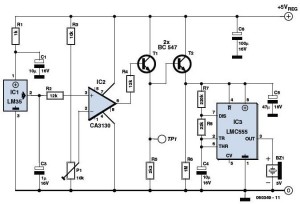
The overhead detector (fire alarm) circuit utilizes a precision integrated temperature sensor, the LM35 (IC1), which offers an accurate linear output.
The overhead detector circuit is designed to monitor ambient temperature levels for fire detection purposes. The core component of this circuit is the LM35 temperature sensor, which is known for its high accuracy and linearity in temperature measurement. The LM35 outputs a voltage that is directly proportional to the Celsius temperature, making it suitable for applications where precise temperature readings are critical.
In the schematic, the LM35 is connected to a power supply, typically ranging from +4V to +30V, allowing it to operate efficiently in various environments. The output pin of the LM35 is connected to an analog-to-digital converter (ADC) or a comparator circuit. This setup enables the system to convert the analog voltage output of the LM35 into a digital signal or to compare it against a predefined threshold voltage that corresponds to a specific temperature, indicating a potential fire hazard.
Additional components may include resistors for voltage division, capacitors for noise filtering, and possibly a microcontroller to process the temperature data and trigger an alarm or notification system. The circuit may also incorporate a relay or a solid-state switch to activate external alarms or fire suppression systems when the temperature exceeds a predetermined threshold.
This overhead detector circuit is essential for early fire detection, providing timely alerts to prevent potential disasters. Proper calibration and placement of the LM35 sensor are critical to ensure accurate readings and reliable operation in real-world applications.overhead detector (fire alarm) circuit is a precision integrated temperature sensor type LM35 (IC1), which provides an accurately linear and .. 🔗 External reference
The overhead detector circuit is designed to monitor ambient temperature levels for fire detection purposes. The core component of this circuit is the LM35 temperature sensor, which is known for its high accuracy and linearity in temperature measurement. The LM35 outputs a voltage that is directly proportional to the Celsius temperature, making it suitable for applications where precise temperature readings are critical.
In the schematic, the LM35 is connected to a power supply, typically ranging from +4V to +30V, allowing it to operate efficiently in various environments. The output pin of the LM35 is connected to an analog-to-digital converter (ADC) or a comparator circuit. This setup enables the system to convert the analog voltage output of the LM35 into a digital signal or to compare it against a predefined threshold voltage that corresponds to a specific temperature, indicating a potential fire hazard.
Additional components may include resistors for voltage division, capacitors for noise filtering, and possibly a microcontroller to process the temperature data and trigger an alarm or notification system. The circuit may also incorporate a relay or a solid-state switch to activate external alarms or fire suppression systems when the temperature exceeds a predetermined threshold.
This overhead detector circuit is essential for early fire detection, providing timely alerts to prevent potential disasters. Proper calibration and placement of the LM35 sensor are critical to ensure accurate readings and reliable operation in real-world applications.overhead detector (fire alarm) circuit is a precision integrated temperature sensor type LM35 (IC1), which provides an accurately linear and .. 🔗 External reference
Warning: include(partials/cookie-banner.php): Failed to open stream: Permission denied in /var/www/html/nextgr/view-circuit.php on line 713
Warning: include(): Failed opening 'partials/cookie-banner.php' for inclusion (include_path='.:/usr/share/php') in /var/www/html/nextgr/view-circuit.php on line 713
